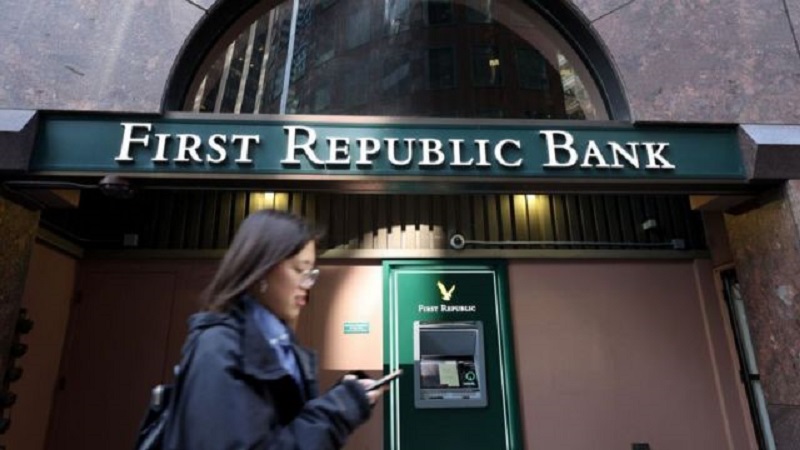
Los major US banks agreed on a joint plan for inject US$ 30,000 million into First Republic Bankthe operation was coordinated by the US government to stabilize the entity and curb banking instability.
The move was announced in a joint statement by Treasury chief Janet Yellen; that of the Federal Reserve, Jerome Powell, and the heads of the Federal Deposit Insurance Corp. and the Office of the Comptroller of the Currency.
The document states that “this show of support from a group of large banks is very welcome and demonstrates the resilience of the banking system.” Although there is uncertainty about this “resistance”.
The document was signed by the largest banks in the United States that committed to the rescue to stop the fall that the financial sector is going through after the bankruptcy of Silicon Valley Bank. Specifically, the distribution of money it will be like this: Bank of America, Wells Fargo, Citigroup and JPMorgan Chase will deposit US$5 billion; Goldman Sachs and Morgan Stanley will contribute US$ 2,500 million; and Truist, PNC, US Bancorp, State Street and Bank of New York will deposit $1 billion each. In total, some US$ 30,000 million that they agree to leave in the First Republic for 120 days.
After the news was released, the regional bank’s titles increased amid a climate of euphoria among investors. From session lows, it shot up 89%, rising from US$20 per title to US$40. However, specialists warned that there are doubts about whether the measure will strengthen investor confidence in First Republic, as well as the health of the banking sector in general. First Republic shares, after recovering on Thursday, fell more than 20% in after-hours trading.
The drop came after the bank announced it would suspend its dividend “during this period of uncertainty,” the Financial Times reported. The bank also said it would seek to reduce its indebtedness, as well as the size and composition of its overall operations.
First Republic Bank was expected to be the next bank to fail after the collapse of Silicon Valley Bank and Signature Bank. These banks were exposed to long-term bonds and riskier assets and were affected by the Fed’s interest rate hike.
First Republic Bank has clients similar to SVB, with portfolios of technology companies and deposits of more than US$250,000. The bank said it is stable, but S&P Global Ratings downgraded the bank’s bonds to junk on Wednesday and investors continued to sell.
As with the Silicon Valley Bank failure, several entities are facing problems of illiquidity and losses due to the fall in the value of treasury bonds due to increases in interest rates by central banks around the world. . Once again, before the bankruptcy of the banks, the State comes to the rescue of the banks, the losses are socialized.
The Economist Michael Roberts he noted that “it is clear now that governments and monetary authorities want to avoid ‘liquid, liquidate’ and the fall of Lehman, even if such a policy would clean up the ‘dead wood’ and ‘system rot’ for a new day. Politically, it would be disastrous for governments presiding over another banking collapse; and economically, it would probably trigger a new deep recession. Therefore, it is better to ‘print more money’ to bail out bank depositors and bondholders and avoid financial contagion, since the banking system is so interconnected.
Source: www.laizquierdadiario.com

